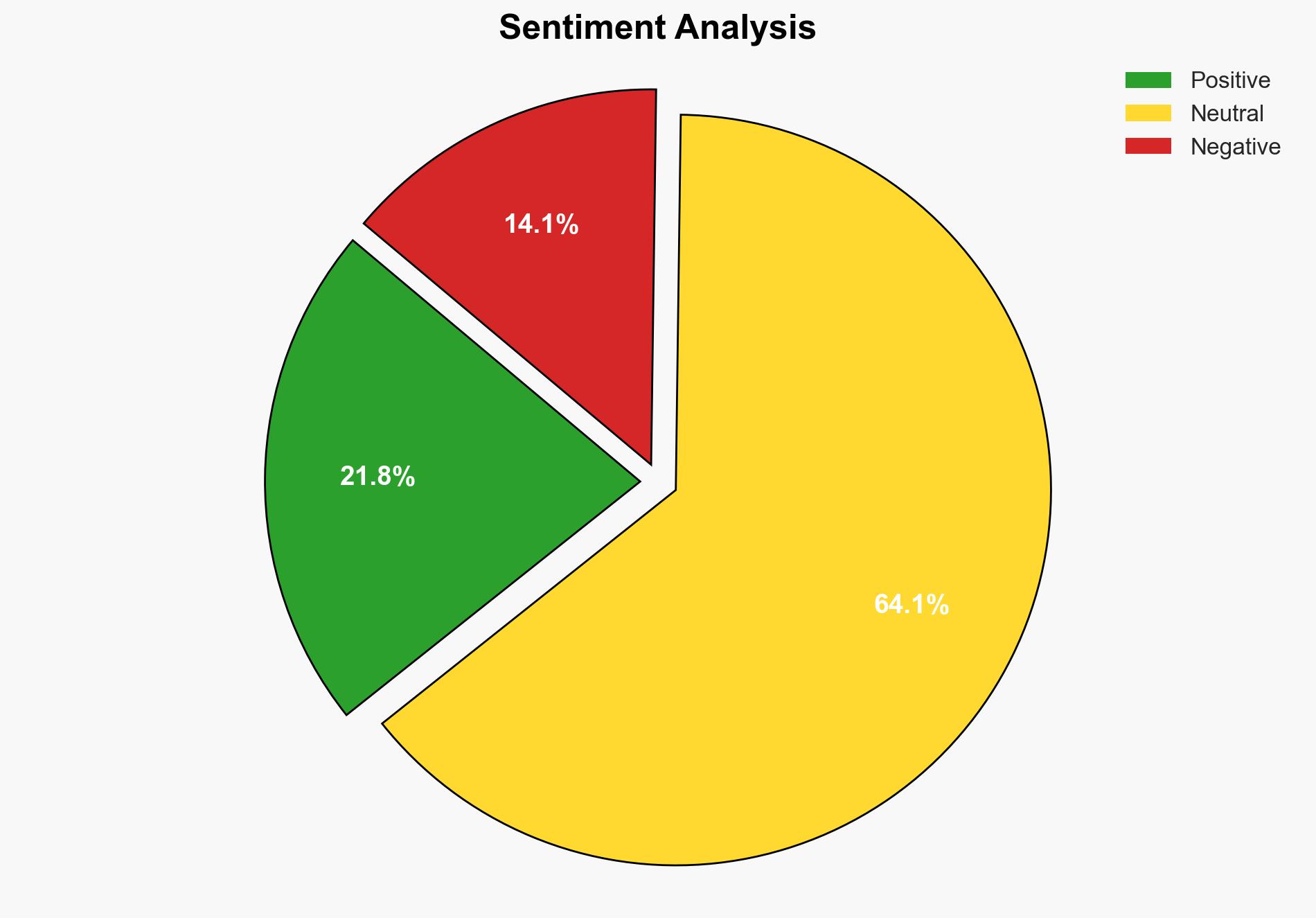Is A New Middle East Forming – The National Interest
Published on: 2025-03-06
Intelligence Report: Is A New Middle East Forming – The National Interest
1. BLUF (Bottom Line Up Front)
The Middle East is experiencing a significant geopolitical shift characterized by increased pragmatism and cooperation among regional leaders. This transformation is marked by efforts to normalize relations, focus on economic development, and reduce conflicts. Key developments include the end of the Qatar blockade, normalization efforts with the Assad regime, and a ceasefire in Yemen. These changes suggest a move away from zero-sum policies, with leaders like Mohammed bin Salman and Ebrahim Raisi playing pivotal roles. Recommendations include supporting diplomatic initiatives and monitoring potential flashpoints.
2. Detailed Analysis
The following structured analytic techniques have been applied for this analysis:
SWOT Analysis
- Strengths: Emerging cooperation among regional powers, focus on economic development, and reduced conflict levels.
- Weaknesses: Persistent distrust among neighbors, unresolved issues in Lebanon, Syria, Iraq, Palestine, Yemen, Libya, and Tunisia.
- Opportunities: Potential for increased regional stability and economic growth through cooperation and pragmatic policies.
- Threats: Risk of renewed conflict due to unresolved territorial and political disputes, particularly involving Israel and Iran.
Cross-Impact Matrix
Events in one region, such as the normalization of relations between Saudi Arabia and Iran, can influence neighboring areas by reducing tensions and promoting economic cooperation. Conversely, unresolved conflicts in areas like Gaza can exacerbate regional instability.
Scenario Generation
- Best-case scenario: Continued diplomatic efforts lead to sustained peace and economic growth across the Middle East.
- Worst-case scenario: Breakdown in negotiations results in renewed conflicts, destabilizing the region further.
- Most likely scenario: Gradual progress towards stability with intermittent setbacks due to entrenched political and ideological differences.
3. Implications and Strategic Risks
The shift towards pragmatism and cooperation in the Middle East presents both opportunities and risks. While there is potential for enhanced regional stability and economic growth, unresolved conflicts and distrust among nations pose significant risks. The region’s stability is crucial for global economic interests, particularly in energy markets. National security concerns remain, especially with the potential for escalated conflicts involving key players like Israel and Iran.
4. Recommendations and Outlook
Recommendations:
- Support diplomatic initiatives that promote regional cooperation and conflict resolution.
- Encourage economic investments in reconstruction and development projects to stabilize the region.
- Monitor potential flashpoints and engage in preventive diplomacy to mitigate risks.
Outlook:
The Middle East is likely to experience a gradual shift towards stability, with continued diplomatic efforts and economic cooperation. However, the potential for renewed conflicts remains, necessitating vigilance and proactive engagement by international stakeholders.
5. Key Individuals and Entities
Significant individuals mentioned in the report include Mohammed bin Salman and Ebrahim Raisi. These leaders are instrumental in shaping the region’s geopolitical landscape through their pragmatic approaches to diplomacy and cooperation.





